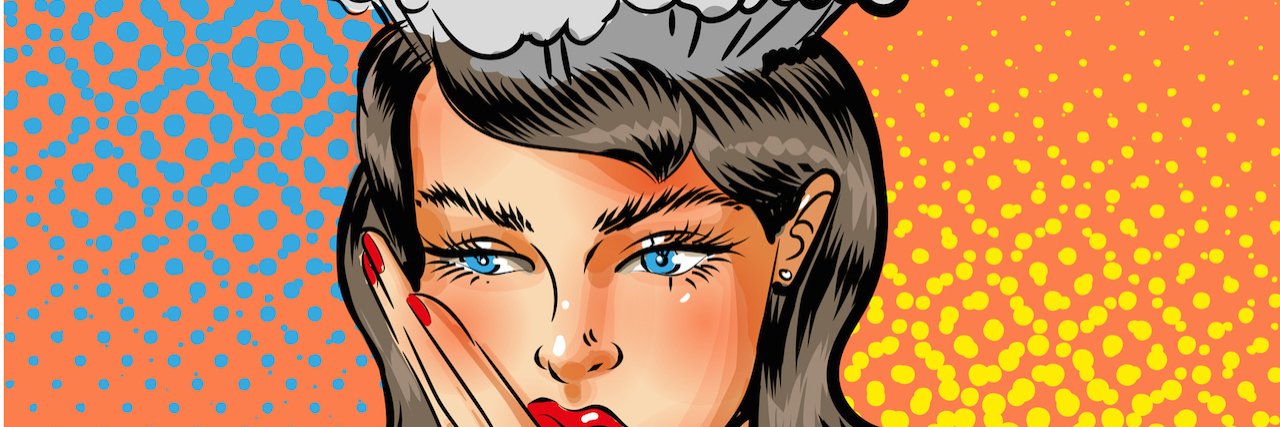I’ve been chronically ill for more than half of my life. I accept it (most of the time). I grieve the person I was but try to embrace the person I’ve become — simultaneously because of it and directly in spite of it. I’ve learned my limits and set my boundaries. I have completely adjusted my lifestyle to cope with the day-to-day grind.
But what do you do when you start to experience new symptoms? How do you navigate treacherous lows in a sea already dubbed Just Getting By? (Please don’t try and find that on a map.)
I will tell you.
About eight months ago, I started getting short, electrical-like headache bursts behind one of my eyes (thankfully, my brain doesn’t pick favorites and the attacks oscillate between the right and left side because sharing is caring). One of my main diagnoses is already daily chronic migraine and in the past, I’ve endured attacks behind my eyes for days at a time. But these are different.
They aren’t triggered by exhaustion, my bouncing vision or fluorescent lights. They don’t build and last for days like a migraine. I haven’t thrown up a single time. They are seemingly random and very short, sometimes only lasting seconds, and are accompanied by one-sided facial swelling, involuntary tearing, stuffy nose, red-eye and a droopy eyelid. In a single hour, I can get up to 20 attacks. These really fun stabbing sessions are especially common at night, right when my body enters REM sleep (10/10 would not recommend to a friend).
When I rattled off my very long list of diagnostic observations to my headache-specialized neurologist, I held my breath as I waited for him to tell me I had cluster headaches. I mean, after all of my Google sleuthing, I obviously knew what my diagnosis was, right?
It turns out that I have a very rare headache condition called SUNCT Syndrome (short-lasting unilateral neuralgiform headache with conjunctival injection and tearing — please say that five times fast). The condition is so rare that there’s little known and effective treatments for it — highly pressurized and non-continuous oxygen being the primary source of proven relief.
Just between us, I’m still in a state of all-consuming shock. I’ve worked so hard to build a life of worth and meaning despite daily migraine, no vestibular system, chronic ear disease and a rotating door of aggressive surgeries. I’m kind of done, you guys. I’m so freaking tired.
But this is what I’ve learned in the midst of it all:
1. There isn’t a limit to the number of comorbid conditions or diagnoses a person can have. Just when you’ve had your fill, your body goes, “Hey, try this one on for size.” And it royally sucks.
2. You don’t have to embrace the news like an old friend. You can stare at yourself in the mirror and go through all of the stages of grief like a ferris wheel and then get back on again until you feel OK with getting off.
3. Life is unfair. Some people get lucky and others get a little less so. But it’s what you do with the broken bits that matters most.
4. It’s OK to tell the people you love that this is hard. Don’t gloss over it. Cry in your car until the windows fog — just don’t go at it alone. The people in your life may not understand how to react at first, but teach them how to help you. Be their guide.
5. Life will be waiting for you when you’re ready for it. I’m only a week or so removed from my diagnosis. The days have been hard and the nights have been almost unbearable. But I have tried to remind myself of everything I’ve accomplished in the past eight months. Just because my pain has a name, it doesn’t make my journey less than. It doesn’t make my life any less meaningful.
I’ll pick myself back up when I’m ready. I’ll keep going. And for what’s it worth, I hope that you can too.
Getty image via axel2001

